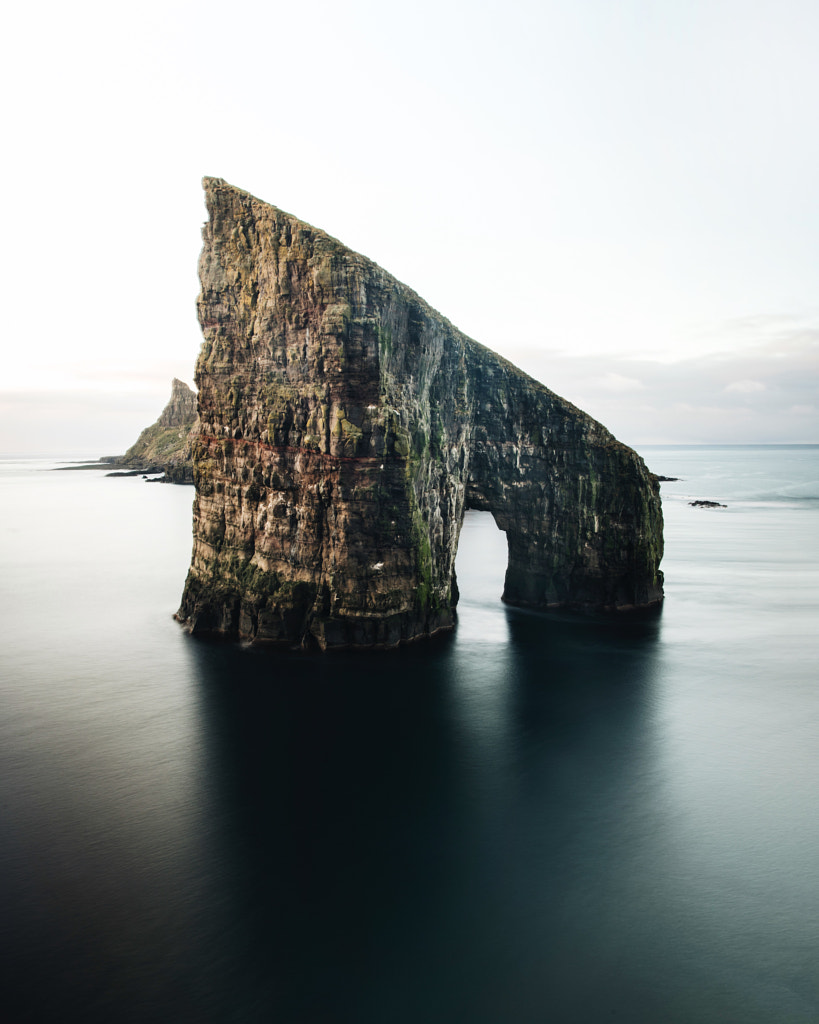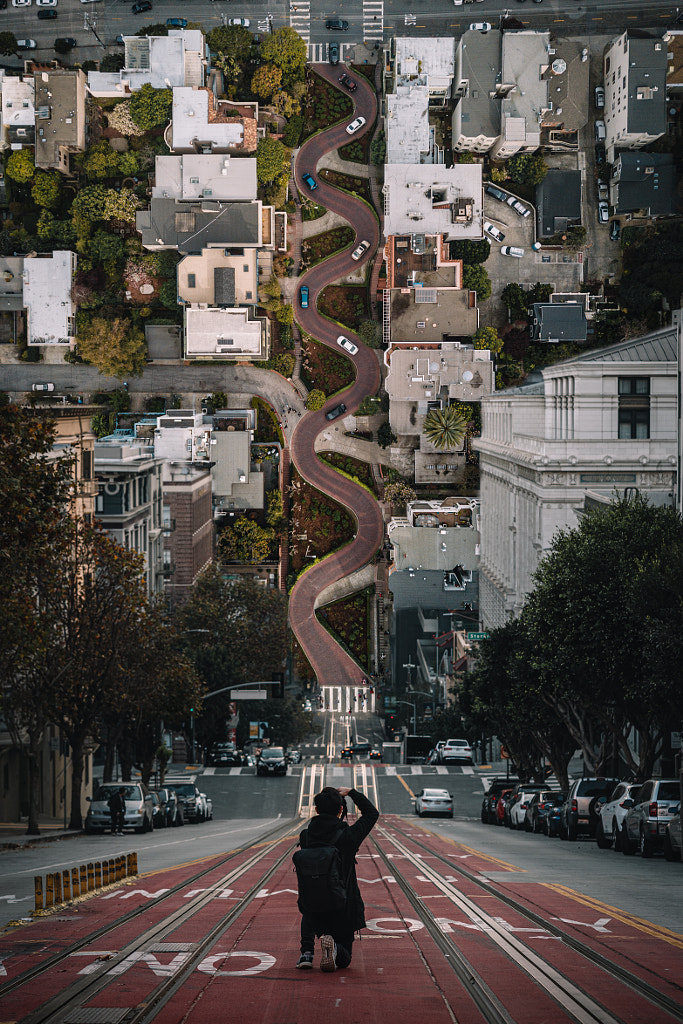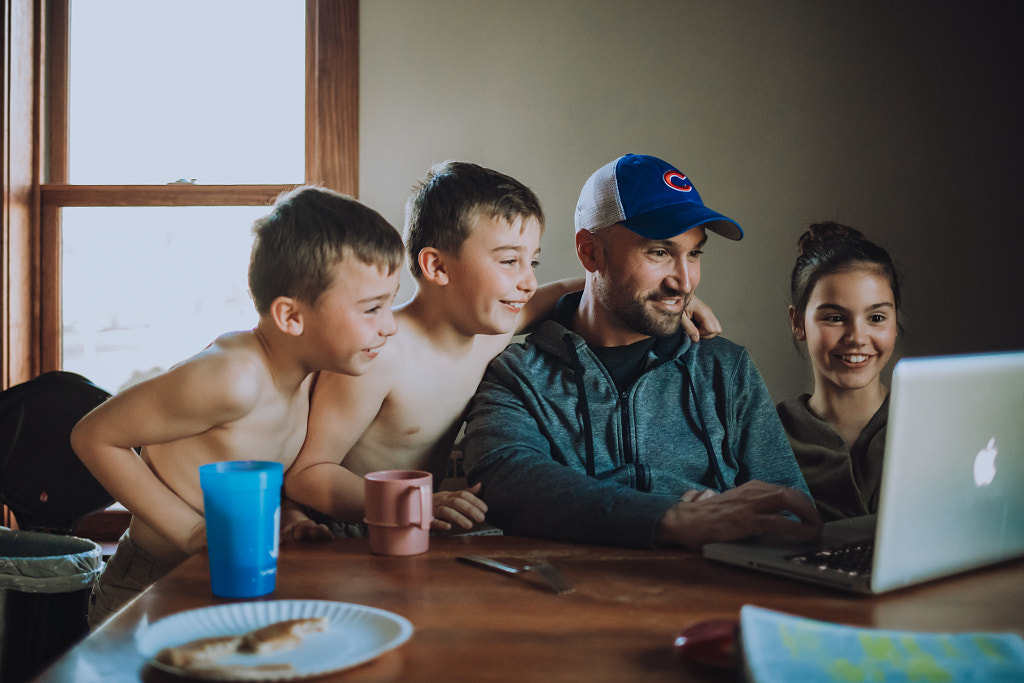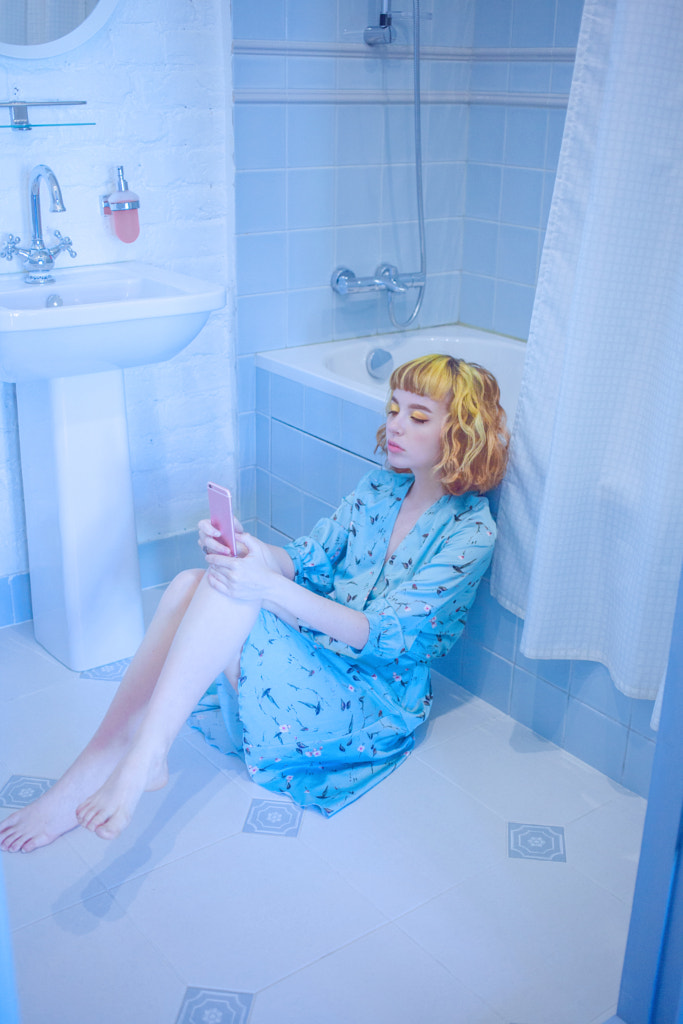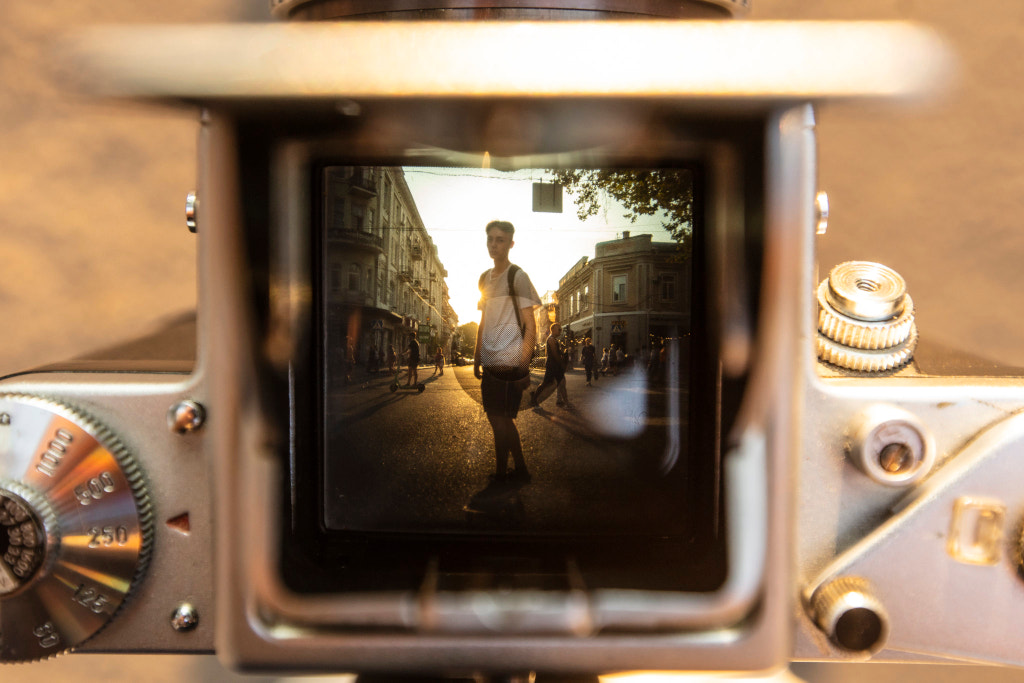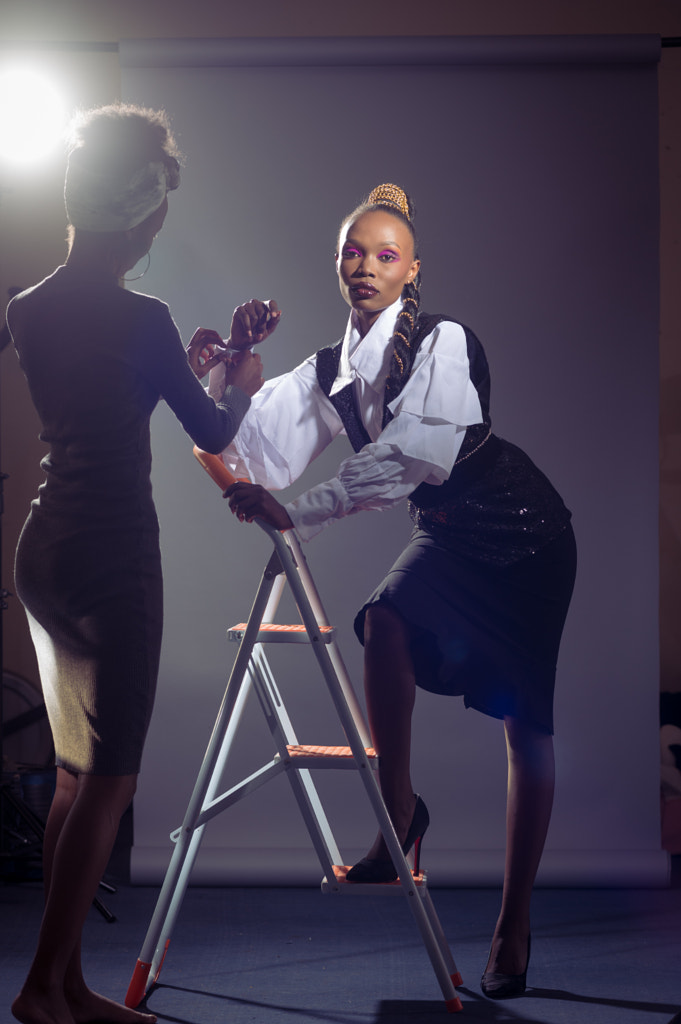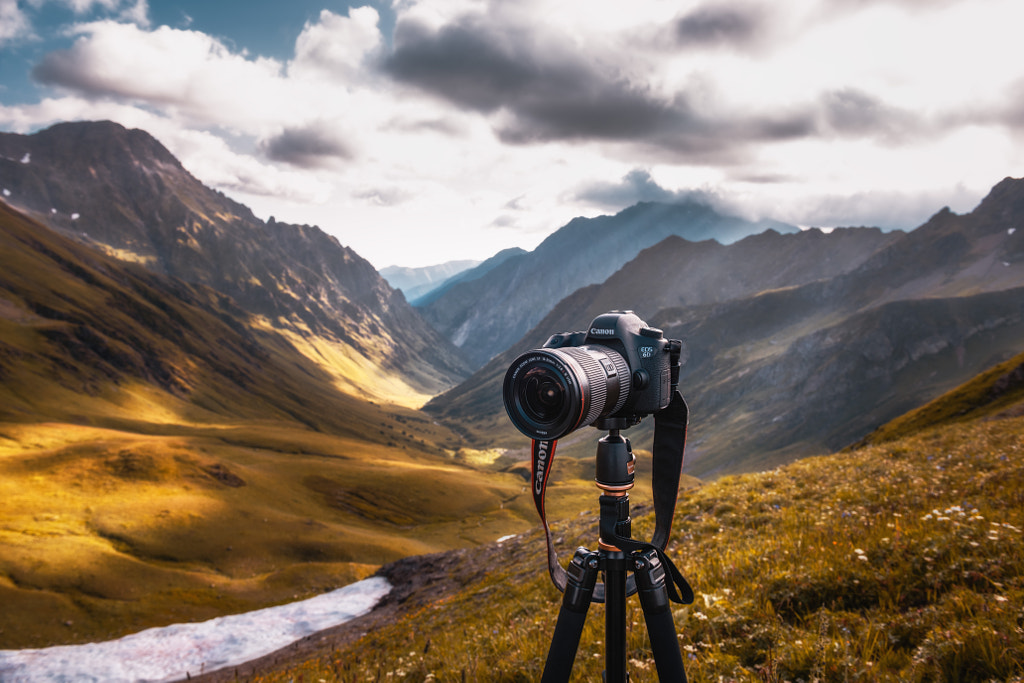For years, we’ve found inspiration in blogs created by photographers of all genres. Tristan Zhou has shared gear guides for beginners, while Tanner Wendell Stewart has transported us to the breathtaking landscapes of the Faroe Islands.
Through his blog, Benjamin Von Wong shares behind-the-scenes stories from his epic and surreal conservation-themed photoshoots (for this shoot below, for example, he borrowed 10,000 plastic bottles from a waste management center).
Heading into 2022, photography blogs offer a wellspring of ideas and knowledge, while also giving artists new and evolving ways to engage their audiences, from traditional articles to vlogs and more. For established photographers, blogs offer the opportunity to share their know-how and give back to the community. For up-and-coming photographers, blogging can also be instrumental in establishing an online presence and building a personal brand. These are our tips for getting started.
Tip #1: Know your niche
When it comes to blogging, it’s important to stay true to where your passions lie. If you’re a specialist in a certain genre, whether it’s newborn sessions or commercial product shoots, lean into that. There are tons of photography blogs out there, but if you have niche expertise, you’ll be able to offer something no one else can.
If you’re located in a unique spot, that’s something else that could differentiate you. Write down some adjectives that describe what you do, and then underline the most important. Thinking about yourself from a branding perspective can take time, but it’s key to growing a recognizable online presence.
Tip #2: Understand your reader
Deciding on your target audience is a great first step toward determining the theme and tone of your blog. If you’re writing for your clients, for example, your content will be different than if you’re writing for other photographers. Blogs aimed at potential clients could include posts about how to prepare for a photoshoot in your niche, while articles for fellow photographers might include anything from gear reviews to post-processing tips and tricks.
As you grow your blog, you can even ask for feedback directly from your followers. What kinds of articles do they enjoy the most, and what would they like to see more of? Answer any specific questions they have. The best blogs offer something of value, whether it’s compelling storytelling or actionable advice. By understanding your audience, you’ll understand what they value and what they want to know. Thinking about your readers can also help you get to the core of your “why”—your purpose for having a blog in the first place.
Tip #3: Be real
The most important tip of all: be authentic. When you’re personally invested in your blog, you’ll be much more likely to stick with it, so write about what interests you. Tell us why certain shoots and sessions were meaningful to you. Share memories from a recent road trip, or recount the story of an unforgettable moment you witnessed while documenting a couple on their wedding day.
Tell us what experiences shaped you as an artist and why. Another idea would be to reach out and interview someone you admire or who inspired your journey, whether it’s a professional collaborator (e.g., stylist, makeup artist, model) or another photographer. Once the interview is published, you can both share it.
Tip #4: Offer a call to action
Knowing your audience will also help you tailor your posts to their needs, so remember to make it easy for them to connect with you or hire you down the road. Maybe you include a link where they can book a session, or perhaps you offer a discount code for your print shop. It could be as simple as an email newsletter sign-up. Readers are potential clients, so consider including a clear call to action every once in a while to keep them engaged with your business.
Tip #5: Use keywords
Blogging can be an essential ingredient in search engine optimization, and SEO is all about keywords. Incorporate keywords that relate to your photography niche and location—e.g., “New York family photographer”, “Nairobi lifestyle photographer”, “Delhi product photographer.” Keyword planners like the Ahrefs Keywords Explorer or the Serpstat Keyword Research tool can help you find trending keywords. We’re not recommending spamming your blog with keywords that don’t make sense, but some natural, well-placed terms and phrases in your titles and posts will help your website surface, making it easier for potential clients to find you.
Tip #6: Incorporate lots of images
According to a recent survey from Orbit Media, most bloggers add just a few images per post, but those who use more visuals are more likely to get better results. As a photographer, images are your best tool, so use them. Share the finished pictures from a recent shoot, and include some behind-the-scenes shots as well. At the same time, quality usually trumps quantity, so curate your blog to only include your best photos. To help your photos surface in search results, remember to incorporate keywords in your metadata.
Tip #7: Promote your posts
Share your blog across all your social media channels, from Facebook to Pinterest, to tap into your existing network. Send your blog posts to the clients and collaborators you’ve featured, and they might share as well. Maybe you post a new article on Instagram Stories with a link sticker that directs followers to your blog, or you list a recent how-to as part of the Resources Hub on 500px.
Use your blog as a way to stay in touch with past clients by sending your recent posts out as part of your email newsletter, or tap into a new audience by organizing a “swap” with another photographer, where you write a guest blog post for their website and they do the same for yours.
Tip #8: Set realistic goals
Photographers are busy, and it takes time and effort to keep a blog up and running. For some, churning out a 2000-word article might come easy, but if you’re not one of those people, that’s okay too. Give yourself goals that feel manageable and doable with your schedule so you don’t lose interest and throw in the towel. Maybe it’s writing a 300-word post after every shoot or project, or maybe it’s sharing one photo tip a week.
It could be as simple as sitting down to write every Tuesday from 3:00 to 3:30, right after editing. Having a specific date and time when readers expect a new post can also help keep you on track. As you hit these attainable goals and gain confidence, you can set more ambitious milestones for yourself.
Want more tips on photography branding? Check out our Photographer’s Guide to Branding.
Not on 500px yet? Sign up here to explore more impactful photography.
The post The photographer’s guide to blogging appeared first on 500px.
